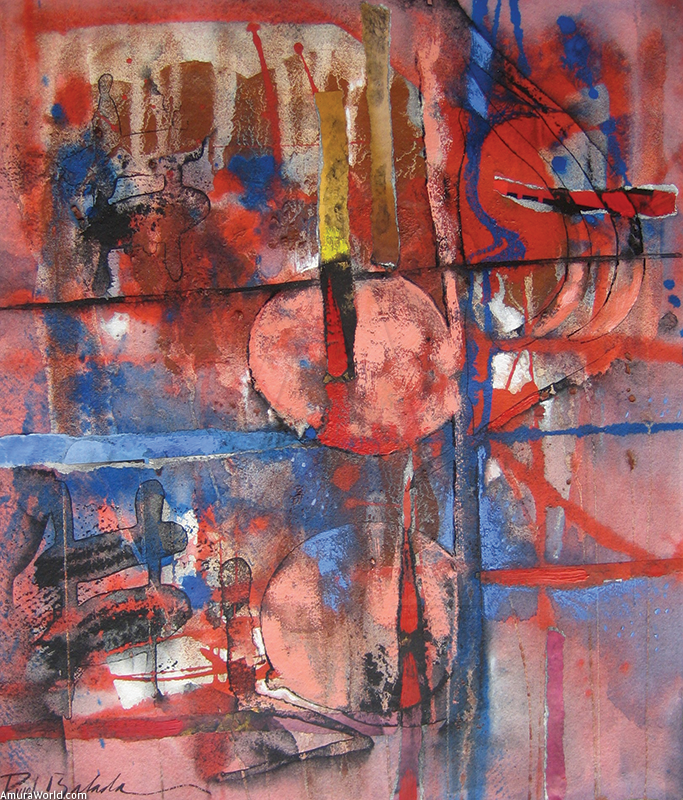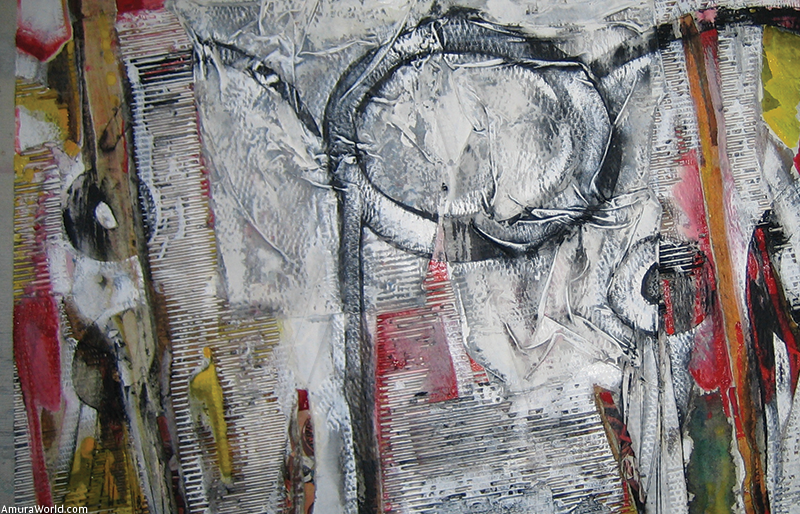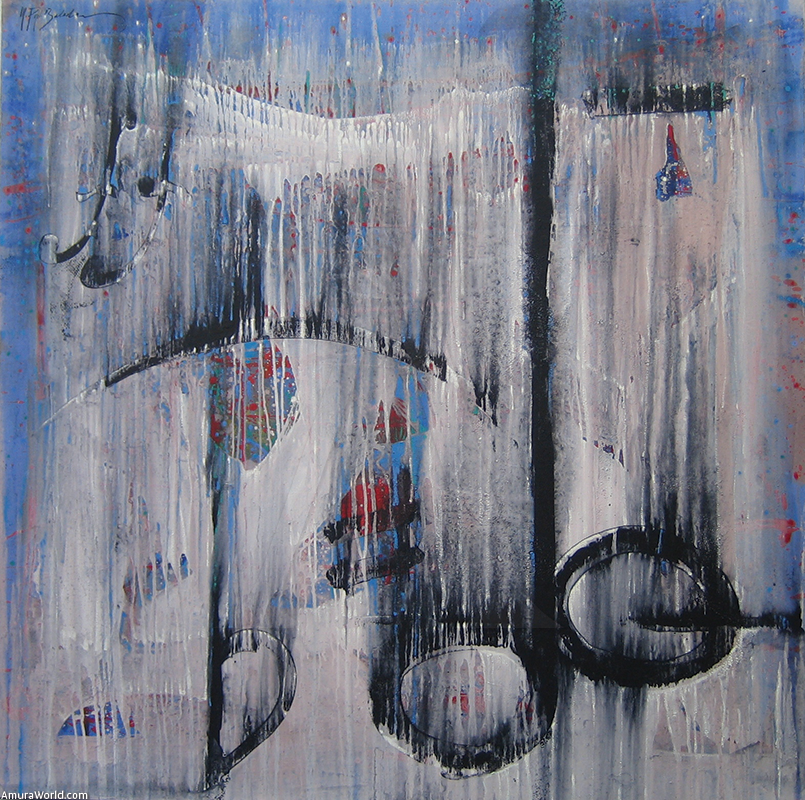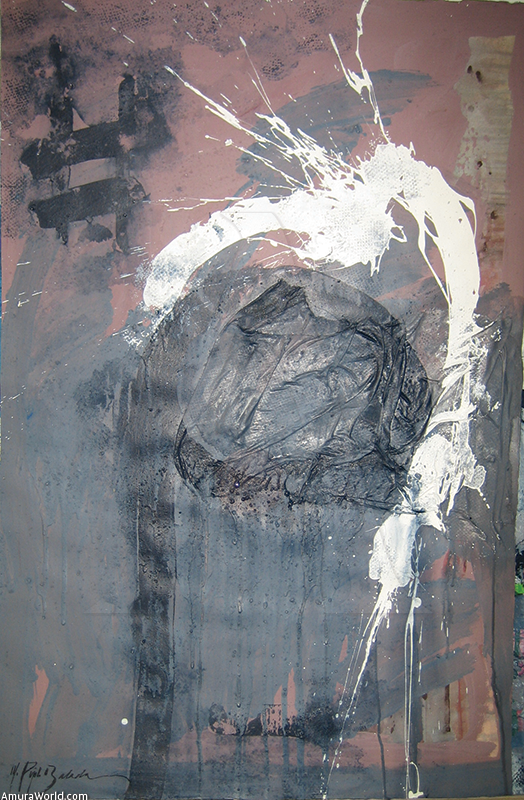The love of painting
Born in Vic, in 1947, some 70 kilometers from Barcelona, from a very early Manuel Pujol Baladas showed his preference and aptitude for art, drawing, painting, creativity and plastics, but he has to face discouragement from his family, mainly from his father who liked painting from youth but wanted him to be an engineer like him.
His father wanted him to be serious, dignified; he doubted that his son could make a living from art, and this negativity helped him to forge his insistence and perseverance, which lead him to study Fine Arts, in which he stood out enough to be appointed an assistant professor at 17 years of age. He recognizes that during this time, he learned more than his students, most of whom were more than 30 years old; therefore, he asked himself want he was doing and left teaching.
So his father told him: “If you have to be an artist and I can’t stop you. you had better be one at your own will”. And that was what he wanted, it was the era when people rebelled, not only against their parents, but against the social ties determined by Franco’s dictatorship in Spain.
The danger of learning
From then on he had to follow his own will and effort, which makes him stand out
‘I have the luck of qualities, develop well and stand out. until one day Mir6 arrived, who already knew me and I had painted with him and he heard that Salvador Dali was looking for an assistant with a steady hand and with a really good drawing base”.
So at a mere 19 years of age, M. Pujol Baladas had his first introduction to Salvador Dali and his wife. Gala, although they didn’t really see eye to eye at their first meeting that no fruitful relation- ship developed, which only lasted one day. After a year, they looked for each other again and they formed a collaboration that lasted for about ten years, throughout which intense adrenalin was always felt from being around them and from participating in their nucleus for around 6 years.
‘I met Picasso. Dali; I lived with him. which was a determining factor for the whole world. You learn to develop with people, to respect different criteria and so you grow technically because you learn many things. However, here I had to face a great challenge, which is when one has to demonstrate whether or not one is a painter, who one is with personal style, with a philosophy of life itself.
“Dali’s world helped me and gave me opportunities because going to paint with an artist with such a profound and personal pictorial language that is produced by the realism of Dali is extremely gratifying and broadens one’s horizons immensely.
Autonomy and unique personality
“But I don’t want to live from the conceptual point of view, so I have to sever the umbilical cord. For me painting is a way of being, living, looking at life; therefore, it would be absurd to live in the body and soul of another person.
“I had the advantage of living great experiences from very young, let’s say from 19 years of age. even a little before with the spiritual and intellectual separation of my parents, but it took me a lot to break my relationship with Dali and Gala.
“During hits time, it was influenced by Dali’s world; a figurative language that was evolving, transforming into an expressionism that was boiling into an abstract expressionism”.
Permanently breaking away from Dali was not easy because a difficult and adverse public environment had been generated, beyond art, so it decided to leave Spain to take refuge in Colombia. At the begin- ning of the 1980s. he lived in the jungle on the Colombian Brazilian border with a native tribe, where he learned to hunt fish and discover the human being and love for children and the elderly.
This selfisolation had two objectives, the first being a separation from a world in which he had lived through difficult times and second and more importantly, the search for his inner self, to find himself against with no interference.
“I spent a year in Colombia and it completely forgot about art and everything, because art is a consequence of the spirit and it that is not good.
the art is not good as it doesn’t flow”. Alter a year, he was rescued by a Dutch missionary and he returned to Europe, this time to live in Madrid for four years in a time where the city re-emerged as active and creative, when Tierno Galvan was the mayor. This transformation of the city is reflected in his work, which was fed by many positive elements.
‘I think that as a human being I can grow and be myself and as a result my work takes a very personal direction".
By the mid 1980s. Manuel Pujol Baladas' work began to bear his name and his own style.
From Spain to the world
An important event that served as an international window for his work was in 1991 when he was invited to create the sporting image of the 16 sub venues of the Barcelona Olympics through lithographs.
Thanks to the prestige he attains, he obtained exclusivity contracts to paint for Europe. However, eight years ago Mexico suddenly snatched this great artist away from Spain, but his artistic life is not the reason for the change but the love of a woman, the love that makes his life in Mexico City.
Many art connoisseurs say that he is a plastic artist who summarizes Catalan tradition in particular and Europe in general, which we do not doubt. However, we must say that he has by enriched by Mexican color, flavors, music and culture.
Of course, his work deserves an equally important space because its language, aesthetics and its revolutionary quality are well worthy of discussion.
Text: Ricardo Vázquez ± Photo: Alfadir Luna





